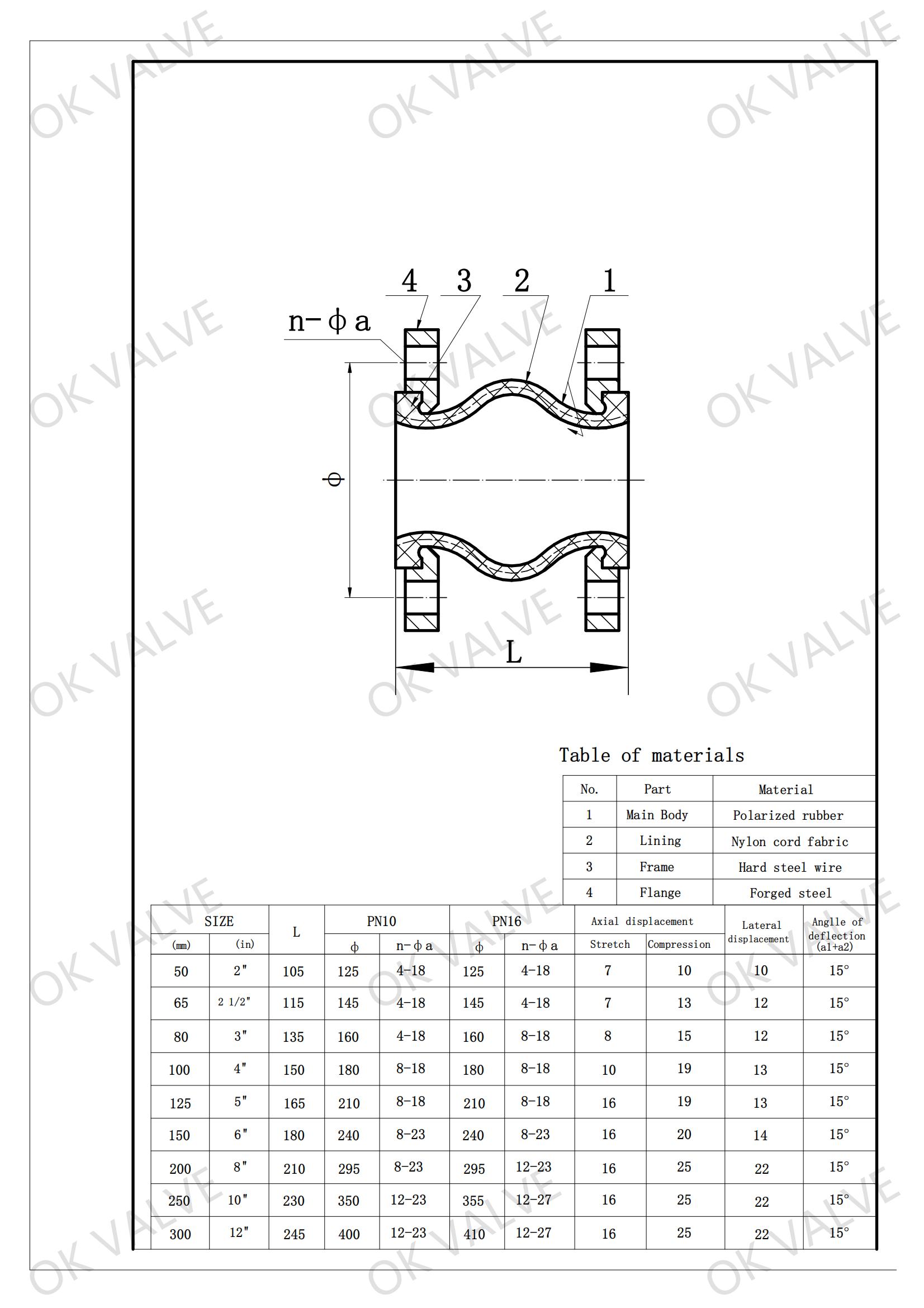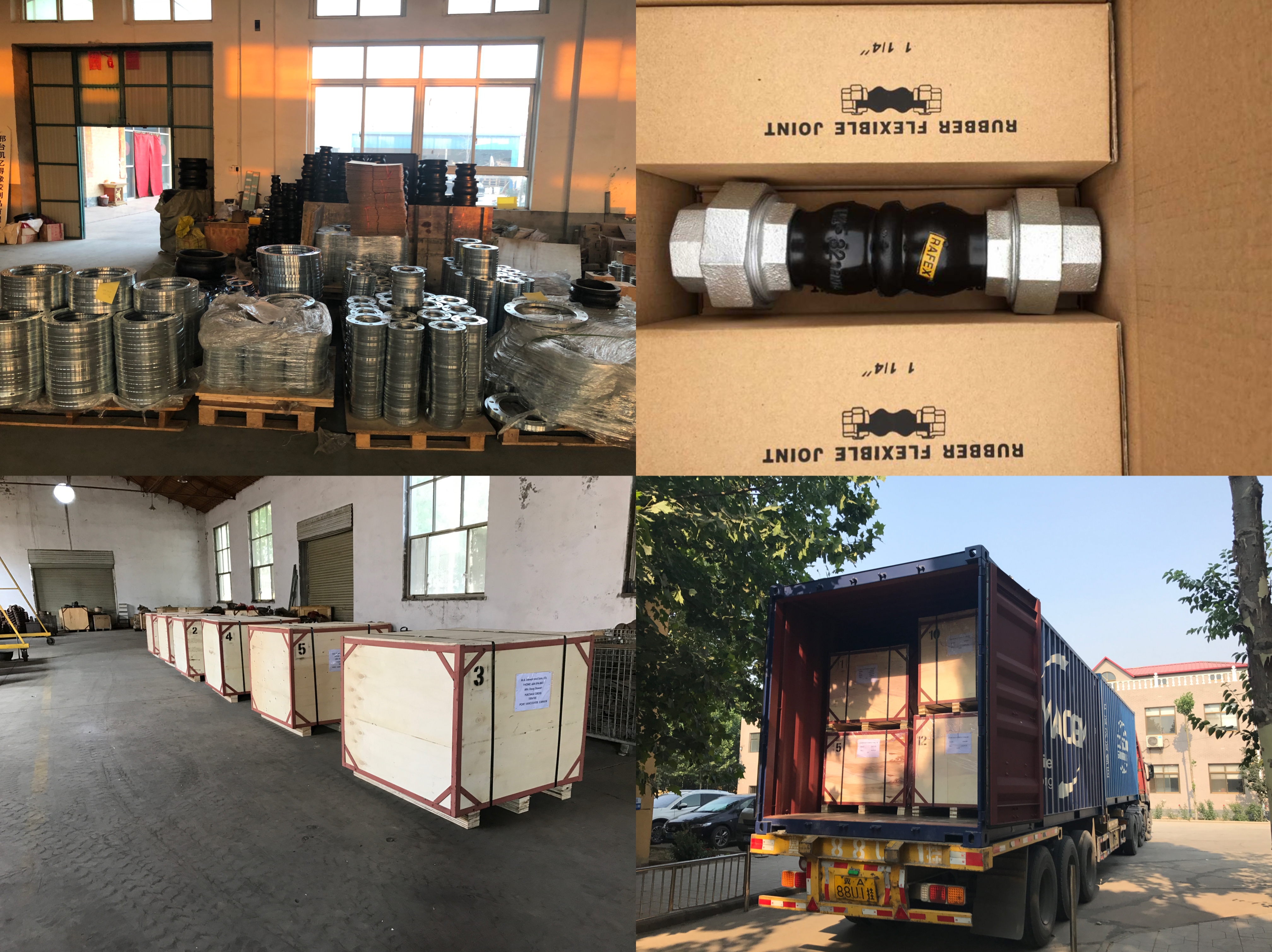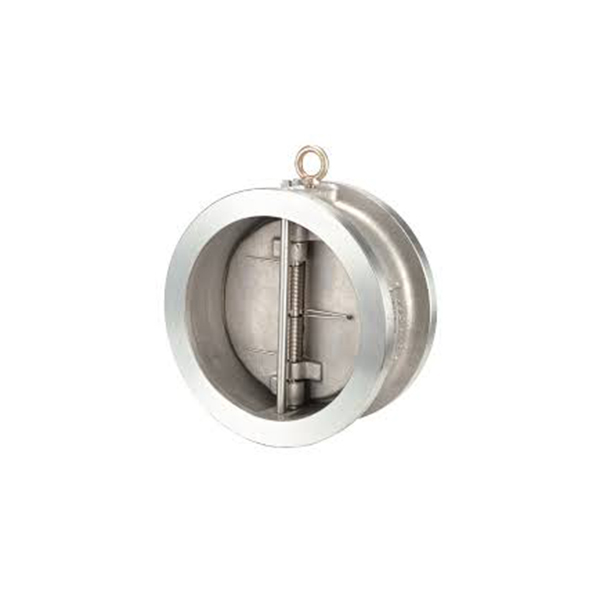Good Wholesale Vendors Cv Joint Boots - BSP Expansion Joint – Hongbang
Good Wholesale Vendors Cv Joint Boots - BSP Expansion Joint – Hongbang Detail:
Rubber Expansion Joint
Surface of the waveform compensating element is rubber, and the inner layer is a sandwich reinforced with several layers of strong fiber or steel tape (wire). A reinforcing sandwich, such as a reinforcing fiber or steel strip (wire), extending to a gelatinlike flange at both ends with a hard steel wire frame inside the flange. The rubber expansion joint has a large displacement compensation ability, can be axial, transverse and angular displacement compensation, noise reduction, vibration reduction and a certain anti-corrosion ability. Its high pressure resistance, good elasticity, large displacement, vibration absorption and noise reduction effect, convenient installation and other characteristics, can be widely used in water supply and drainage, HVAC, fire fighting, compressor, papermaking, pharmaceutical, shipping, water pump, fan and other pipeline systems.
Selection of flexible rubber joint:
Structure diagram
Structure diagram
1. Conventional application temperature of rubber joint is -200~70℃. The instantaneous temperature can reach 115℃, and the service temperature is 70~115℃.
2. Flange rubber joint, in the working pressure and high working temperature (diameter of more than 200, temperature of more than 70℃, working pressure of more than 1.5Mpa), can choose the flange rubber joint equipped with limit device.
3. For the rubber joints connected with flanges, the bolts connecting the flanges should be connected from the inner side of the flange to the two ends of the flange respectively, and the washers or spring washers should be handed in. The bolts should be tightened diagonally gradually.
Rubber joint connected by the live joint should not be replaced at the left and right ends during installation, so as not to cause leakage or damage of the product.
Product detail pictures:




Related Product Guide:
Quality First,and Customer Supreme is our guideline to provide the best service to our customers.Nowadays, we are trying our best to become one of the best exporters in our field to meet customers more need for Good Wholesale Vendors Cv Joint Boots - BSP Expansion Joint – Hongbang , The product will supply to all over the world, such as: Vietnam, Malta, Florence, Abiding by our motto of "Hold well the quality and services, Customers Satisfaction", So we give our clients with high quality products and solutions and excellent service. Be sure to feel free to contact us for further information.
A nice supplier in this industry, after a detail and careful discussion, we reached a consensus agreement. Hope that we cooperate smoothly.






